In ancient times, the world had its own list of 7 wonders that were considered magnificent, beautiful, and meaningful. However, many structures from the past have been destroyed by natural disasters or human actions and no longer exist today.
Digital artist and graphic designer Yevgeny Kazantsev has created an intriguing series of images that reconstruct the ancient wonders of the world based on historical documentation and remaining ruins. Eugene staged these designs under the assumption that these structures still existed in a modern context. The designer’s project is highly regarded for its artistic and historical value, taking viewers back to the past.
1. The Hanging Gardens of Babylon
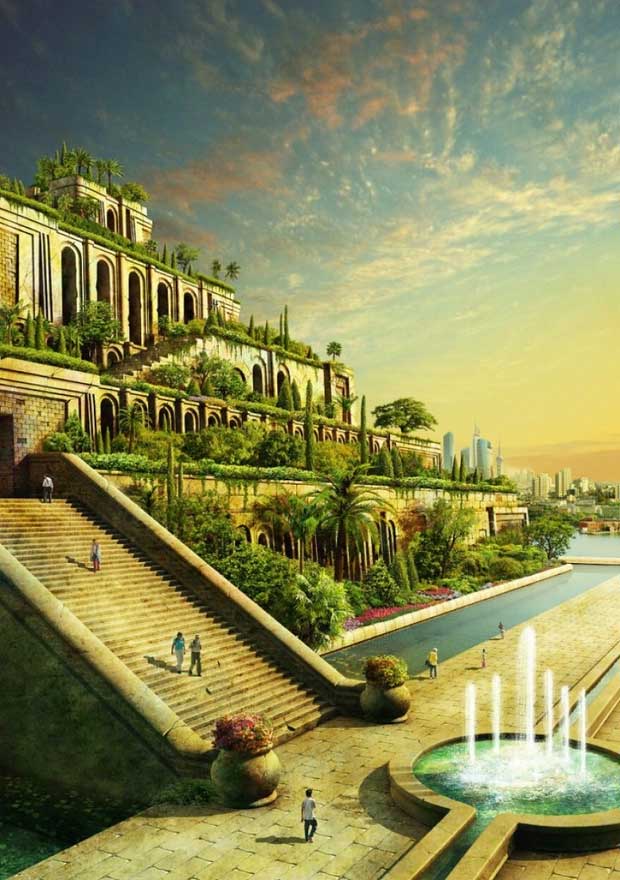
The Hanging Gardens of Babylon are one of the 7 wonders of the ancient world. According to legend, the gardens were built by King Nebuchadnezzar II (who reigned from around 605 to 562 BC) next to his palace for his wife, Queen Amitis, because she missed the lush green hills of her homeland. The gardens are described in historical texts as exquisitely crafted, resembling a multi-tiered green hill with terraces.
2. The Taqi ad-Din Observatory in Constantinople
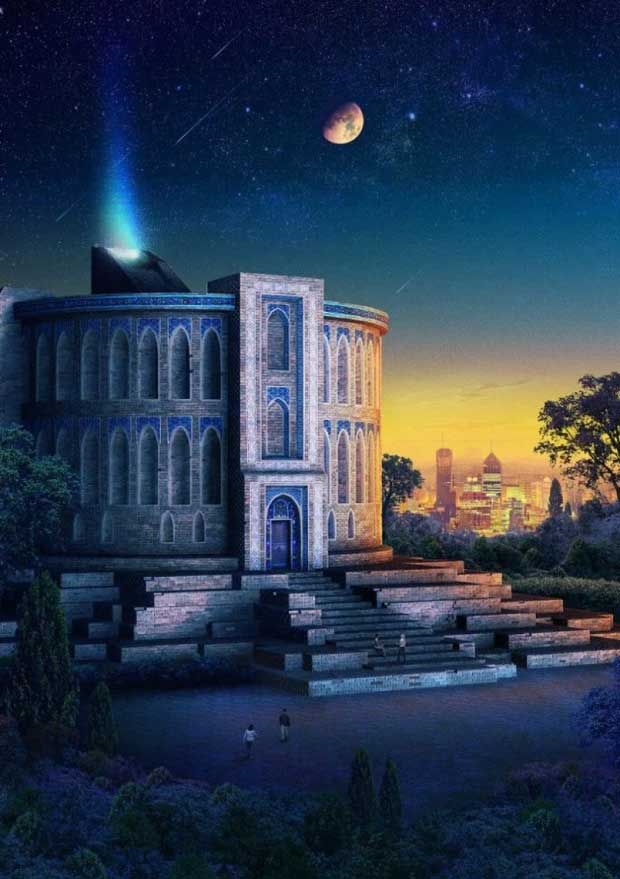
Built by Taqi ad-Din Muhammad ibn Maruf in 1577, the Taqi ad-Din Observatory in Constantinople was one of the largest astronomical observatories of the medieval world. However, it did not last long and was destroyed in 1580, just three years after its construction, as it was used not only for astronomy but also for astrology, a form of divination prohibited by Sharia law.
3. The Statue of Zeus at Olympia
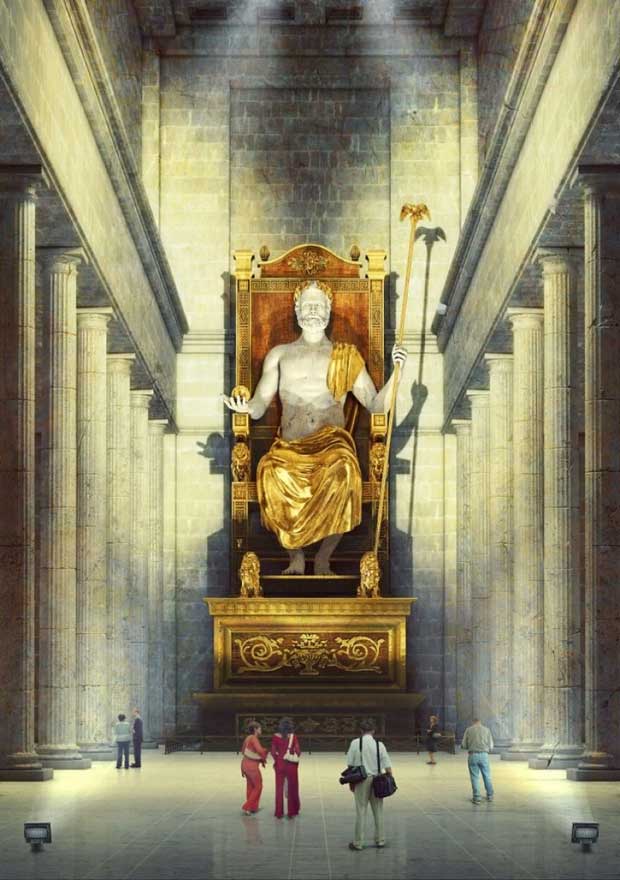
The Statue of Zeus at Olympia was a colossal seated statue of Zeus, the king of the gods on Mount Olympus, about 12 meters tall, created by the Greek sculptor Phidias around 435 BC. The statue’s frame was made of wood and adorned with plates of ivory and gold.
4. The Colossus of Rhodes
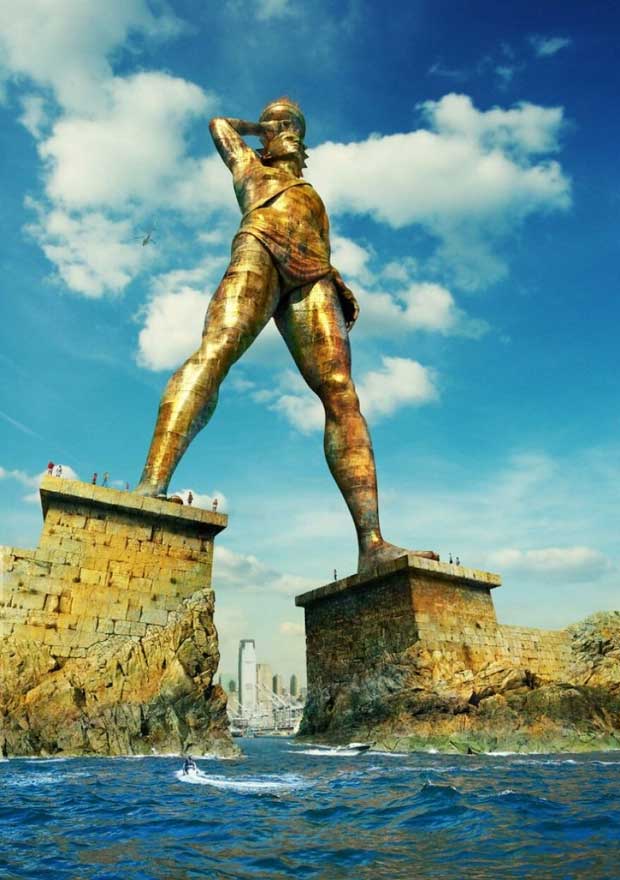
The Colossus of Rhodes was a statue built to commemorate the city of Rhodes’ liberation from a year-long siege by Demetrius Poliokret. This ancient statue, standing about 33 meters tall, is considered one of the 7 wonders of the ancient world. However, it did not last long after its construction in 280 BC, standing for 54 years before collapsing during an earthquake in 226 BC. In the 21st century, proposals have been made to erect a new Colossus at the port of Rhodes, but it remains a topic of debate.
5. The Acropolis of Athens
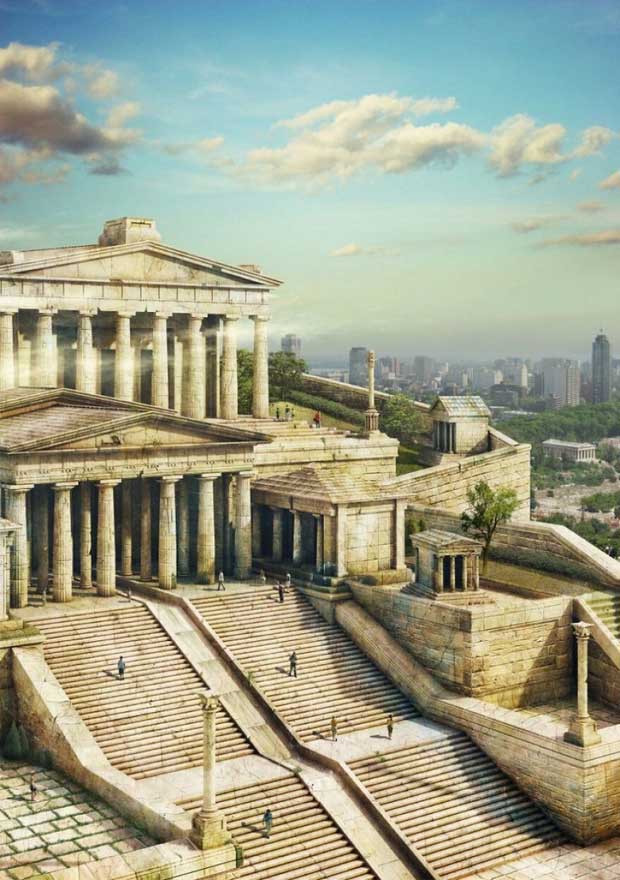
The Acropolis of Athens is an ancient citadel built on a rocky hill overlooking the city of Athens. The complex consists of massive buildings, the most famous of which is the Parthenon. The Parthenon and other structures were severely damaged during a siege by the Venetians in 1687. Today, only a few remnants of the Acropolis remain.
6. The Tower of Babel
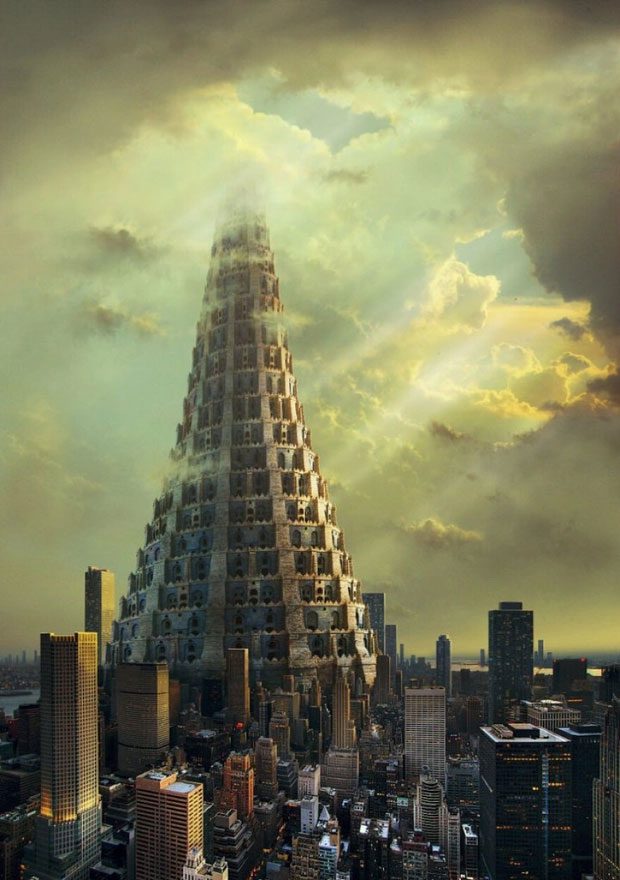
The Tower of Babel is a mythical structure mentioned in the Book of Genesis in the Old Testament. While many consider the Tower of Babel to be a fictional construction, some scholars argue that it was real and bore many similarities to the famous architectural works of Babylon and Sumer.
7. The Great Sphinx of Giza
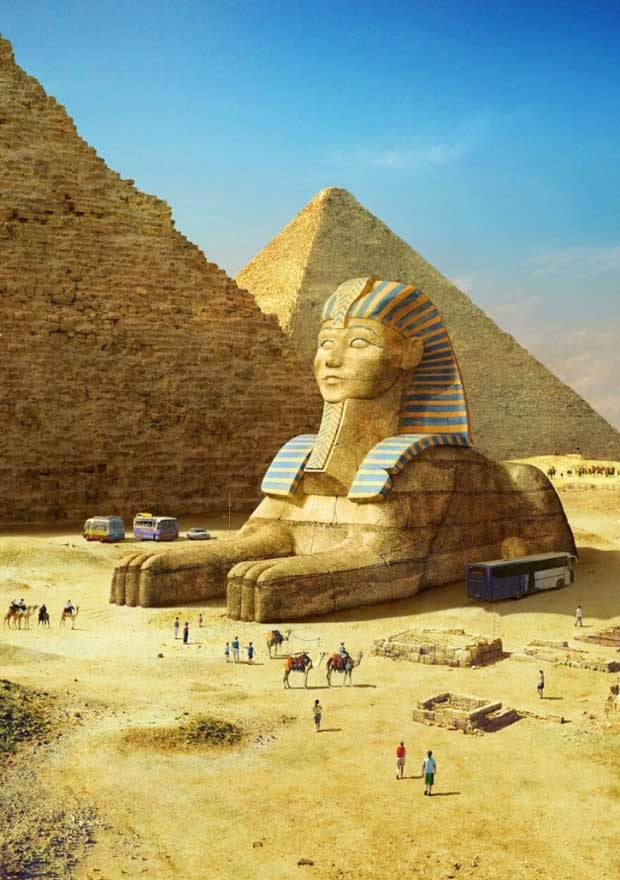
The Great Sphinx of Giza is believed to have been built by the Egyptians of the Old Kingdom during the reign of Khafre (circa 2558–2532 BC). The statue is made of limestone and carved from rock. With a length of 73 meters from paws to tail and a height of 20 meters, it is the oldest known monumental sculpture in Egypt and one of the most famous statues worldwide.
8. The Great Temple at Petra
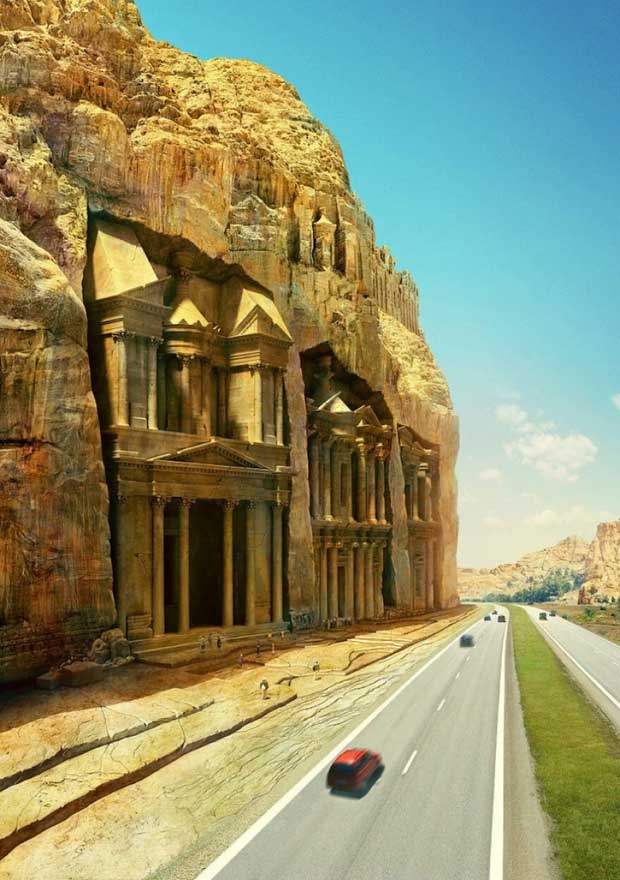
The Great Temple at Petra is a massive complex built around the 1st century AD during the reign of the Nabataean king Aretas IV. It is unclear whether the building was intended for religious or administrative purposes. The vast complex covers an area of approximately 7,556 square meters and is relatively well-preserved compared to other sites on this list.
9. The Temple of Artemis
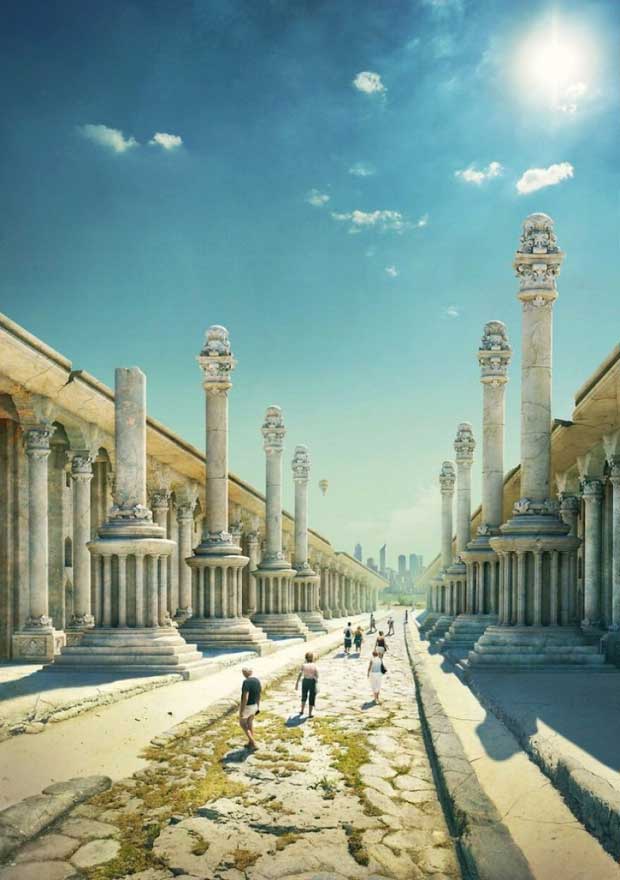
The Temple of Artemis was dedicated to Artemis (equivalent to the Roman Diana), the Greek goddess of hunting, the moon, and chastity, and the sister of Apollo. The temple, located in Ephesus, was completely rebuilt twice: once after a flood and again after a destruction event. By 401 AD, it was entirely destroyed, leaving only fragments and the foundations of the last temple.
10. The Mausoleum at Halicarnassus
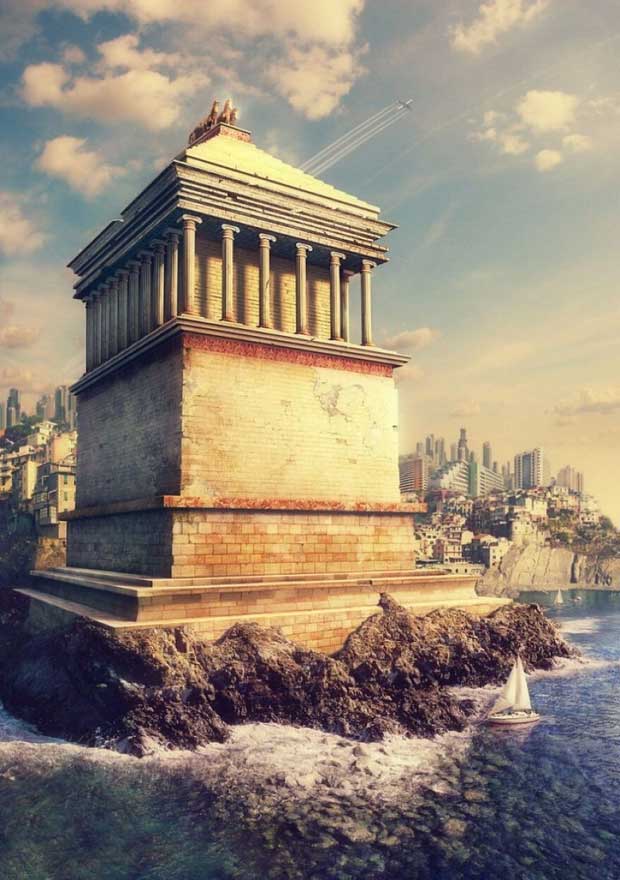
Constructed from 353 to 350 BC, the Mausoleum at Halicarnassus was the tomb of the Anatolian ruler of Caria, Mausolus, and his wife Artemisia II. The mausoleum stood about 45 meters tall and was adorned with reliefs created by famous Greek sculptors.


















































